A WRITER'S WIT Empties 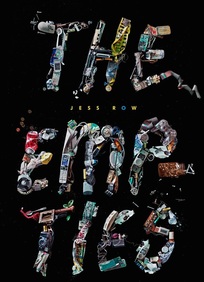 Yasu + Junko Yasu + Junko November 3, 2014, Jess Row, “The Empties”: Two years after a permanent power outage occurs in August, 2015, people of a community in Connecticut barter and worse to get the basic things they need to live. ¶ Interesting. When one tries to imagine a future without electric power, even a two-hour blackout does little to tell one what it would be like permanently. But Row’s story give one a fearful glimpse. [Click on the cover’s image above to connect with The New Yorker’s “This Week in Fiction” blog to hear how Row experienced similar times.] “Not about the old dead life: only about the life that took its place.” That’s right. The closet of J. Seiden, a woman in her late thirties, tells us more than anything what it would be like, at least, superficially. Where is her laptop? “Heaped in the back of a closet somewhere, upstairs, with all the other dead things they weren’t able to cannibalize: the surge protectors and headphones, Nathan’s guitar amp, their digital cameras and printers; iPods, iPads, the Rumsons’ Tivoli stereo receiver and Harman Kardon speakers.” The human loss, which would seem to be greater, does not register as clearly with these characters: a body frozen in the snow until spring, for example. This life in 2017, after the disaster, is like any story of its ilk: desolate and yet hopeful. The Empties is perhaps a better description of the people than all the unrecycled receptacles that remain behind. A sad but realistic peek into what could happen to us. Move over, Orwell and Huxley. Row has captured a future that even you could not imagine. Your Face in Mine is Row’s most recent book. Photograph by Yasu + Junko. NEXT TIME: MY BOOK WORLD A WRITER'S WIT CREATESPACE STAFF: A PLEASUREWhen I began this process of do-it-yourself publishing many months ago, I contacted several companies, and while they tried to sell me their wares, I "interviewed" them, as well. When it came time to make my decision I chose CreateSpace at Amazon largely because they had the most experience—at least fifteen years. And through the entire process they've been great! Let me enumerate the ways the staff at CS have served me in a most professional and mannerly way:
The process of publishing certainly isn't the same as creative writing. For years now I've gotten up every morning and written four or five ours a day, seven days a week. Oh, every six months or so I took out time to submit short stories to journals, but most of the time, I wrote. Stories. Novel manuscripts. A memoir.
Then when I decided to publish a collection of fifteen of the first twenty stories I've published this last decade, my days took on a different look: proofreading the copy not once but three times (including help from a fine copy editor) until I felt all the "issues" were cleared up. Often, as I uploaded the latest round of changes, I still had much to do on this end: marketing, publicity, readings, blog posts in which I would talk about my book, story by story, social media, online advertising. There has always been something on my plate, and I learned something else. As long as this book is in print and I care to sell it, there always will be something to do! NEXT TIME: NEW YORKER FICTION 2014 NEXT THURSDAY (or the next): LAST INSTALLMENT OF DIY PUBLISHING, A Look at the Final Product! A WRITER'S WIT VERONA, LAKE COMO, & MILAN Fellow Travelers, In case you can't tell, I enjoy photographing people in candid shots, as well as signage, and patterns I happen to see. I enjoyed traveling with you! Until our next voyage . . . . NEXT TIME: DIY PUBLISHING 101-G, CS Staff
A WRITER'S WIT MY BOOK WORLD Gillibrand, Kirsten. Foreword by Hillary Rodham Clinton. Off the Sidelines: Raise Your Voice, Change the World. With Elizabeth Weil. New York: Ballantine, 2014.
Written as a call to women to gather their collective power and wisdom in order to move ahead as part of a larger coalition, this book is also memoir and political manifesto. Gillibrand shares many anecdotes from her family experience, from strong grandmothers and mother who mentor Kirsten, to her husband and children, who nurture her in yet other ways. She paints for the reader a “typical” day, in which she is like any working mother: managing lunches, car pools, rides after school, and, oh yeah, writing legislation for issues such as sexual assault in the military. Furthermore, she shares much from women (and a few men) in politics who’ve helped her along the way. She also tells tales about the nameless bad boys of the Senate who make inappropriate and unsolicited comments about her weight or appearance and how she, fully under composure, responds in ways that are appropriate. But finally, the book sounds a clarion call to women and men everywhere, who believe it is way beyond the time when women should occupy at least half of the Senate and House seats. The opposite has been true for too long, and what has it gotten us? Studies show that women are far better at working collaboratively, among other positive traits, so why shouldn’t they now have a chance to show what they can do (as Bob Thaves, cartoonist, said “Ginger Rogers did everything he [Fred Astaire] did, backwards . . . and in high heels.”). Coming in under 200 pages, the book is a quick read, and Gillibrand’s prose is not laden with political speak. What it is full of is heart! And our political life can always use a shot of that. NEXT TIME: ITALIA 4, LAST INSTALLMENT OF PHOTOS A WRITER'S WIT BEAN & HANKS Daniel Hertzberg Daniel Hertzberg October 27, 2014, Tom Hanks, “Alan Bean Plus Four”. A nameless narrator tells how he and three others—two men and a woman—launch themselves so that they can circle the moon in a vessel they call the Alan Bean (NASA astronaut who landed on the moon in 1969). ¶ Imagine that the character played by Tom Hanks in the film Big wrote a short story about four people rocketing to the moon . . . and this story is what you might get. It is told in the fashion of a fairy tale or perhaps a child’s picture book—yes, it's fantasy! Facile moves that make it possible for the fearless four suddenly to make their launch as the moon comes into view! The writer’s logic is all in the narrator’s youthful head. ¶ And I’m not sure why this voyage is made. Do these participants hope for fame for themselves and the iPhone photos? Or is it for the smell of it (they reek upon splashdown)—miraculously enough—as they land near Oahu? To have gone to the far side of the moon . . . I'm not sure there is enough awe. ¶ Mr. Hanks’s story is successful enough—enjoyable for what it is—but does its writer have the skills to write a story that stands up to other New Yorker stories? The likes of Alice Munro? T. C. Boyle? I repeat a question I’ve posed before: Is it fair for the magazine to provide space here for a famous actor with a powerful agent, when there are hundreds of English-speaking writers who could turn in a story (on the same subject) far more sophisticated than this one? I guess the fiction editor will never be able to admit the following. A big old kid—sentimental and nostalgic—wrote this story so that the youngsters of today may never forget the heroes of our once great and honorable space program! Is that enough of a reason? Daniel Hertzberg, Illustrator NEXT TIME: MY BOOK WORLD A WRITER'S WIT More about Marketing Your Self-Published Book This is a continuation of a discussion I began last week, when author Marian Szczepanski shared some of her ideas about marketing her recent book, Playing St. Barbara. LIBRARIES—Libraries seem to be “reinventing themselves from book places to community centers, and many have a really impressive line-up of events. They supply the venue and publicize it, you bring your books, do your reading/presentation, then sell the book sat the cover price.” A number of library book clubs have picked up Marian's book, as a result. She currently is completing eighteen of eighteen such events in the Pittsburgh, PA area, close to where her book is set—what she calls “the full court press of promotion.”
CONFERENCES—At conferences you can pay to set up a table where you can sell your books. But the greatest opportunity you have is to network with others, including agents. SOCIAL MEDIA—“I liken Facebook and Twitter,” Marian says, “to tasks like loading the dishwasher, grocery shopping, feeding the dog . . . something that, like it or not, needs to be done for one’s own good.” She set up an author page at FB to keep her personal life separate from her “book stuff.” “All the look at me, look at me posts get tiresome, but there’s no way around it if you want to connect with readers—or maintain contact with readers you’ve attracted in other ways.” She has reconnected with college classmates at FB and LinkedIn pages. “It’s always a last-minute thought before switching off my laptop for the day—gotta check Twitter.” Ah, guess I’ll just have to give in to what I believe is merely a socially accepted form of gossip! CONVENTIONAL MEDIA—As a Houston resident, Marian Szczepanski wrote feature-oriented press releases for community papers and all were published! As a former journalist, she was able to undertake this task herself, but she says there are good templates available online for the rest of us. Any good writer should be able to write his or her own and send it out. She also contacted places where she had worked when a student at Notre Dame University, places that also gave her some attention. “I only rarely check Amazon numbers, but it’s always interesting to me how sales increase whenever I go somewhere.” Marian Szczepanski closes her e-mail to me by saying: “Remember you have to do it your way. You know better than anyone else who your target reader is and what publications might be most interested in it, what the media climate is like in Lubbock.” Right. But it is good advice to us all. Locate your target audience and go after it! NEXT TIME: NEW YORKER FICTION, 2014 NEXT WEEK: DIY Publishing: Working with the CreateSpace Staff! A WRITERS WIT FLORENCE, VENICE NEXT TIME: DIY PUBLISHING, Marketing Your Book 2
A WRITER’S WIT MY BOOK WORLD Navai, Ramita. City of Lies: Love, Sex, Death, and the Search for Truth in Tehran. New York: Public Affairs, 2014. I often inform readers where I first learned of a particular book because it helps set the stage for my profile. I witnessed the author Ramita Navai, a vivacious British-Iranian foreign affairs journalist, as she spoke about her book on Jon Stewart’s The Daily Show (Comedy Central). For all his biting satire about the political world, Stewart’s guest segment is often serious. It often opens a tiny window for Americans, who, like me, tend to be a bit removed from the world at large. I was so impressed with Ms. Navai’s ability to speak lovingly and yet truthfully about her home country that I bought the book! Navai’s thesis is that the political atmosphere in Iran, particularly in the capital city, Tehran, is so repressive that its citizens are forced to lie about their lives. She says in her very first sentence: “Let’s get one thing straight: in order to live in Tehran you have to lie. Morals don’t come into it: lying in Tehran is about survival. This need to dissimulate is surprisingly egalitarian—there are no class boundaries and there is no religious discrimination when it comes to the world of deceit. Some of the most pious, righteous Tehranis are the most gifted and cunning in the art of deception” (xi). Whoo.  Vali Asr Street, Tehran Vali Asr Street, Tehran Yes, many citizens present a public face that is a lie. They live with false documents on their person. The must lie to stay out of prison, and often they lie for such a long period of time that they begin to believe the lies. Navai’s book is told by primarily through the portraits of eight Iranian personalities whom she profiles: a highly paid prostitute who services a mullah (Muslim clergy) and leads an exotic life until she falls out of favor; a young man, secretly a member of MEK (Mojahedin-e-Khalq, Warriors of the People), who returns to his country in 2001 for the first time since his parents took him away in 1979. She limns six others, as well. In essence, people are not allowed to be fully human. It is a fact we’ve always “known” or sensed about Iran, but Navai’s book brings alive this idea through the eight people she profiles. But she also has a deep love for Tehran, having spent at least a part of her childhood there. In the prologue she speaks lovingly of Vali Asr Street, the “one long, wide road lined on either side by thousands of tall sycamore trees” (1) that runs throughout the entire center of the city. In fact, she says, there are over 18,000 sycamore trees that the former monarch, Reza Shah, planted in 1921. The effect, after ninety years is breathtaking, like a European city. The trees may be emblematic of a tortured place that desires to be like the rest of the world, and indeed is in many ways, but is still blighted by its past as well as its present. Eventually trees die. What will Tehran’s image be then? NEXT TIME: Italia! 3, More Photographs A WRITER'S WIT Sin Is for Everyone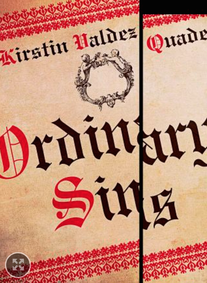 October 20, 2014, Kirstin Valdez Quade, “Ordinary Sins”: Crystal, a single woman pregnant with twins, works in a Santa Fe rectory for two priests and is confronted with a number of jagged truths about priests and the Church. ¶ Valdez Quade is a courageous writer, daring to enter into these domains of the priest: his office, his rectory, even his bedroom. Father Paul, a reformed alcoholic, has taken pity on her and given her a job as a housekeeper . . . who also types. Not only does he pay her, but he seems to offer her a kind of forgiveness—that perhaps she’s not even seeking. ¶ The other priest, young, fresh from Nigeria, is stiff, cold, judgmental. Within these two extremes, Crystal must enter the rectory each day, perhaps symbolic of the Church itself: offering forgiveness in one breath and condemnation in the next. The author has entered into what has always been thought of as a sacred place and rooted around to find that it isn’t quite so. ¶ I became acquainted with Ms. Valdez Quade in 2000 as we participated in a weeklong writers’ workshop, she fresh out of undergraduate school. Need I say, even then, that she brought the best story to the group? She certainly knocks this one out of the park. Her book, Night at the Fiestas will be out in March. You can pre-order now at Amazon. [The magazine gives no credit for the story’s illustration.] NEXT TIME: MY BOOK WORLD A WRITER'S WIT Marketing the Self-Published Book In the last decade and a half, since 2000, the publishing industry has become something it wasn’t before. All the “large” companies (Little, Brown/Scribner’s/Doubleday and more) were gobbled up by even larger corporations. Only W. W. Norton remains as the sole hold out: the one independent publisher that is not beholden to the corporate bottom line (and we all know what that is, the $, the £, the €). Since that time, authors have become acquainted with, indeed been hit over the head with, the notion of “platform,” the idea that almost anything that can net you some sales is worth the time and effort. The publishers will only give you so much in the way of support, unless you’re one of their Bigs, so you must build your own platform.
This week I’d like to share with you some thoughts that author friend Marian Szczepanski recently shared with me concerning the marking of one’s book, developing one’s platform. If her name seems familiar, it is because earlier I profiled her book, Playing St. Barbara, and she herself appeared as a guest blogger to talk about how she came to write her novel. And I have to say that when I check my stats each month, her guest post still receives up to thirty or forty hits! This helps to demonstrate my point that these days, an author must pull out all the stops (this from a former organist) when it comes to marketing his or her book. Marian began her e-mail to me with “Ah, marketing. It’s the little invisible creature on your shoulder that keeps hissing, ‘More! More!’ There is no avoiding it if you want people outside your family and immediate circle of friends to know your book exists. I learned very early on that the engine behind any book . . . is the author. And a freelance publicist, if you can afford one.” [I can't.] Marian continued with a number of ideas. Let me share them with you. TEACHING—“One way,” Marian declares, “to get yourself and your book ‘out there’ is teaching.” At the time she had secured a gig through her publisher at the Ozark Creative Writers conference, where she taught a session entitled “Fabrication from Facts: Researching Historical Fiction,” as well as one called “Writing Good Sex for Great Fiction,” where “the real premise of the class is teaching craft basics (characterization, setting, tension, tension, tension) through the lens of sex scenes.” I can vouch for Marian’s idea about teaching. I took three different workshops from writer Pam Houston, largely because she writes in a way that exploits her autobiographical material, and it took all three for me to grasp fully what she was trying to teach. Also I own every book she’s ever written! When you teach, people buy your books. BLOG TOUR—Marian used TLC Book Tours. Information at TLC states “TLC Book Tours is a virtual book tour site. Virtual book tours are a promotional tool for authors to connect with readers via well-read book blogs and specialty blogs.” This is something Marian took advantage of. You must apply, and I understand there is a fee, but according to Marian the money is worth it. “All kinds of books go on blog tours, and a large percentage come out of by NYC houses.” So if you get in, it would seem you are in good company. GUEST BLOGGING—Marian wrote one for The Quivering Pen (20,000 hits a month) called “My First Cover.” She also suggests writing for The Rumpus. She even suggests whipping up something for the NYT. ADVANCED REVIEWS—These are still a sore point with Marian because of a mix-up in which her publisher assigned two books the same ISBN number, and the other book came out first! Ew. But since I’ll be sending these out as a self-publisher, I myself will be contacting the likes of Kirkus, Booklist, Library Journal, and others, like ForeWord (the only one that may honor self-published authors). I will be doing a great deal of homework learning about advanced reviews, press reviews, and the like! I will speak more of Marian’s ideas next week. Please return. NEXT WEEK: DIY Publishing 101-F, More About Marketing A WRITER'S WIT Orvieto and AssisiI appreciate everyone's comments. Hope you enjoy these shots as much! NEXT TIME: DIY Publishing, Marketing Your Book
NEXT WEEK: Italia 3 A WRITER'S WIT My Book World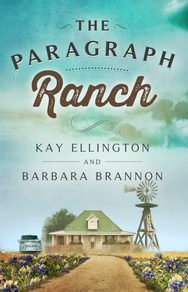 Brannon, Barbara and Kay Ellington. The Paragraph Ranch. Seattle: Booktrope, 2014. The Paragraph Ranch indeed has something to offer every reader. Evenly divided into twenty-four chapters—like two cartons of farm fresh eggs--TPR feels like a multigenre novel: part creative-writing text, part family saga, and part cozy mystery. Whew! That’s a lot to expect of just one book, but Brannon and Ellington have created one that seizes your attention from the first paragraph (heh heh) and never lets you go. Thirty-something Dee Barnett-Kaufmann, native Texan, is called back to her home from North Carolina, where she teaches literature at Walter Raleigh College. Not only that but she’s recently been awarded a distinguished writing fellowship for the summer, one that would up her cred in her department by giving her time to finish her book about G. H. Templeton, a long-forgotten professor of creative writing. All it takes, however, is one phone call from her sister Penny back in Texas to change all of Dee’s plans. Seems that the youngest Barnett daughter is now needed at home more than ever—a woman who couldn’t wait to flee the town of Claxton, when she was eighteen. Each chapter is titled in a way that suggests its content but is also headed with an epigram about how writing works—ostensibly from the writings of G. H. Templeton, the author Dee is researching. Chapter 2, for example, is entitled “No Place Like Home.” The epigram reads: “Create an unforgettable sense of place, through close observation, powerful imagery, and precise description” (16). Then the authors proceed to do just that, limning a clear and colorful view of the Barnett ranch outside Claxton in West Texas but also continuing the tension that has begun in Chapter 1. They tightly weave this strand of the novel—Dee’s thus far vain effort to finish her book—with others: her establishment of a writing group in Claxton, Texas, where she feels she is marooned with her cantankerous mother, who’s just been involved in a mysterious car accident, from which she emerges with two broken wrists; two siblings who now want their mother to sell the family ranch; Dee’s daughter’s flirtation with dropping out of Smith College, as well as a flirtation more fleshly; Dee’s potential relationship with a local landscape photographer (following her marriage that has come to an end). Yep, a bit of romance, too! The strands of the novel are so well woven together by Brannon and Ellington that the plot appears seamless. As Brannon suggested to me recently, she and Ellington think of the plot as a braid in which one strand is woven over the other until all the loose ends are tied up. And as with any good novel, the reader will, I believe, wish to follow each strand until every curiosity is sated, every mystery solved. A real page-burner! And what is this I hear? There are two more Paragraph Ranch volumes in production! Can’t wait. And neither should you. Buy your copy of The Paragraph Ranch from one of the following establishments: Amazon.com Barnes and Noble Booktrope SAVE THE DATEThe authors, along with other members of Lubbock’s Ad Hoc (aka Nighthawks) writing group, will read from their book followed by a book signing. If you haven’t already bought your copy by that point, you’ll be able to purchase one and have it personally signed by both authors! Plan NOW to attend. (As a footnote, I too will read from my collection that is about to come out, My Long-Playing Records and Other Stories, so save the date for me and the other group members, as well!)
December 4, 2014 7:00 P.M. UUC 2801 42nd Street Lubbock, Texas NEXT TIME: Italia 2, More Photographs! A WRITER'S WIT Scheherazade's Magic Continues Merlin Merlin October 13, 2014, Haruki Murakami, “Scheherazade”: Nobutaka Habara, a thirty-one-year-old man living in Tokyo, for some reason is sequestered, and a woman whom he refers to Scheherazade is assigned to take care of his needs while he is hidden away. ¶ Murakami seems to show great admiration for the legendary character of Scheherazade. Habara’s woman comes to his house twice a week, armed with food and her body, which she offers to him easily. She likens herself to a lamprey eel she claims to have been in a former life: “the quiet around her was absolute.” ¶ Scheherazade then tells a tale of how she used to sneak into the house of a boy she had a crush on in high school. It is an image that overtakes Habara himself: “He pictured himself and Scheherazade side by side, their suckers fastened to a rock, their bodies waving in the current, eying the surface as they waited for a fat trout to swim smugly by.” Murakami repeats the lamprey eel imagery throughout the larger tale, creating the idea that in various forms, people lie in wait to capture those with whom they are obsessed. But as with Habara's Scheherazade, their passions fade, the crush ends, and all involved return to a normal life. Murakami’s latest novel is Colorless Tsukuru Tazaki and His Years of Pilgrimage. Merlin, Illustrator. NEXT TIME: MY BOOK WORLD A WRITER'S WIT Taking Care of the Interior The interior of your book obviously begins with the manuscript (MS). As I alluded to in an earlier post, you must see that your MS is properly edited before you upload it at the website of CreateSpace or any other self-publishing company. Either hire someone locally or a staff member at CS. Even writers trained in book editing search out others to edit their MSS. The quote I received from CS was the most expensive service on their menu, and with good reason. It is the most difficult job. Either way, you must see that your book is edited and copyedited. It is the best money you can spend on your book.
CreateSpace offers a “Supported Interior,” which means you upload your MS and they guide you through the process. Free. The “Simple Interior” offers ten “polished templates” you can use. “Simple Custom Interior” is what I chose for my book, My Long-Playing Records and Other Stories. I paid a modest fee to work collaboratively with the CS staff to come up with a look that was unique. The last choice CS offers is the “Moderate Custom Interior,” in which the staff works with you to individualize your book through formatting and typography. This means you can include up to twenty images—great if you’re writing a nonfiction book that needs illustrations or photographs. This option also adds special accents to give your book certain flair—if you like flair. As part of the interior work, you will fill out a questionnaire. The staff encourage you to be wordy in this case, to provide way more information than they’ll ever use, but it allows them to pick and choose from what you give them to formulate a satisfying biography (at the end of the book) and back cover blurb. The process forces you, as the writer, to think about your book and conceptualize what it really is. For example, I wrote out a short but cogent synopsis of each of the fifteen short stories; I included what I believed was thematic material that runs throughout the book. I believe that CS may have used only a fraction of what I submitted, but the process did help the staff to write the back cover material with a knowledge of my characters and stories. I do think it is better if someone else writes your back cover copy; it sounds so much more objective. And because you’re paying for the service, you do get final approval. After CreateSpace has formatted your MS, they will return it to you in a PDF format. You will want, of course, to give this proof more than a quick review. I, in fact, printed out my copy. I then placed a ruler under each line and read the MS once again. Yes, you should read slowly, word for word, aloud if you can stand to hear your own voice. The payoff will be to discover any errors that you overlooked or errors that were created by the CS software. In my case there was a pesky case of suspension points. These are three dots . . . that indicate the halting nature of a character’s speech or thoughts. The CS software has an annoying habit of turning . . . into … The former is traditional; the latter is something the computer people have dreamed up because it must be easier to program than space dot space dot space dot. I had over 175 of these suspension points that had to be changed at my request. I am only allowed 200 changes, so in addition to sixty other changes, I had to pay an additional fee. Other formatting errors included the failure of the software to enlarge the first letter of a chapter (in my case, a story title) on a couple of stories. In one place “along time” had to be changed to “a long time,” demonstrating that even with a vigilant copy editor, a few things had slipped by. This early reading allows you to locate these errors before the book goes to print. At this point, I am waiting for CS staff to reformat my MS, incorporating the changes that I suggested. When the second interior proof arrives, I will again reread it word for word, line by line. Wish me luck. Ah, the saga continues. I did receive the updated proof. After the reformatting, every change that I wished for was done correctly, indicating an attentive and efficient staff! But I also discovered that in the reformatting, the software had created a few new errors, mostly where the magic software got the syllabication wrong at the end of a line! I don’t mind paying extra for my own errors, but paying for the software errors . . . not so much. I would end by saying that PATIENCE must be the hallmark of your work as a self-publisher, because you may continue to locate errors in the second proof, some of your own, and some that the reformatting may have caused. Patience! NEXT TIME: DIY Publishing 101-F, Marketing Your Book A WRITER'S WIT RomaNEXT TIME: DIY Publishing 101-E
A WRITER'S WIT Her Other Life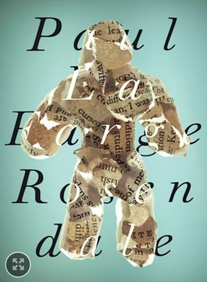 Jason Booher Jason Booher September 29, 2014, Paul La Farge, “Rosendale”: April P moves from Boston to Rosendale and lives with Dara, a potter, who creates a golem. To make money, April P accepts a job as a lap dancer in a local bar. She makes good money, the job not being too seedy, and it gives April P the cash to buy some crack cocaine. Throughout the narrative April P continues to see the golem, and she wonders what the golem (a she) is trying to communicate to April. ¶ The story is told in the third person limited, mainly by way of April P, but occasionally a “we” seems to creep into the narrative, and the reader senses that the golem herself has taken over the story. At the very end, April P asks the golem to go. She no longer needs her, the golem. April P is now free. This story is a kind of sequel to La Farge's "Another Life" from the magazine's July 2, 2012 issue. His Luminous Airplanes came out in 2011. Design by Jason Booher. Story, with Couple Tatsuro Kiuchi Tatsuro Kiuchi October 6, 2014, Kevin Canty, “Story, with Bird”: A youngish couple living in a university-town apartment are occasionally plagued with a bird that enters, presumably, through a skylight (although the narrator claims that this dwelling, located in a northern clime, is “open”). ¶ The bird is sort of a distraction for the couple who seem like they are about to break up. They quit drinking, both getting a lot of work (writing) done, their lives returning to a very regulated boredom. The narrator seems to recall fondly their days and nights of debauchery. ¶ Then the woman goes off to her sister’s wedding with the intent of drinking and screwing (he will later find out). He, too, returns to drinking, and when she comes back, they, for a moment, return to their wild days. In any case, gone is the bird, the wild thing that enters their lives for a short time and then disappears just before they decide to break up. Short but satisfying story. One of Canty’s most recent books is Where the Money Went. Illustrated by Tatsuro Kiuchi NEXT TIME: MY BOOK WORLD A WRITER'S WIT Images for Your Book 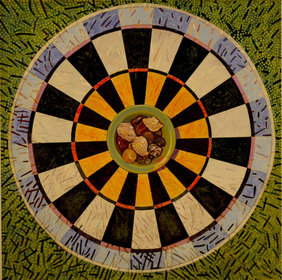 Ken Dixon's Unfinished Target Ken Dixon's Unfinished Target In this segment about do-it-yourself publishing, I want to talk about the cover of my book. CreateSpace requires writers to create and approve the cover of their books before tackling the interior. For me it was easy. My life partner, Ken Dixon, has been a visual artist for almost fifty years, and he granted me the exclusive use of one of his most recent images to use in my book cover. Entitled Unfinished Target, the work lends itself to the book’s title, My Long-Playing Records and Other Stories, by presenting a disc-like image that merely suggests the image of an LP or CD. I didn’t wish for the image to be too graphic—with an image of a “record player” or stereo—making it seem more commercial than literary. Not that there’s anything wrong with that; it’s just not the image I wish to project. On the other hand, if you have no ideas, or if you don’t feel that you are artistically inclined, you can engage CreateSpace to help you. I know two writers who have employed the services of CS and have been happy with the results—even if they did have to wrangle a bit with the staff to get exactly what they wanted. You can also refer to the CreateSpace website to take a look at some examples of covers created by the CS staff. On the same page is a “How It Works” column that more fully explains the process. One of the freeing aspects about self-publishing is that you maintain control. You may submit images to use for your cover. You will also fill out a questionnaire. Take this task seriously, and use it to let the staff know exactly what you want. You may even wish to sketch a rough idea and let the CS staff bring it to life. They will then create two different covers from which you can select one. You may still wish to tweak the one you select, and CS will work with you to get the cover you want. At any rate, remember that readers often make a book selection based on an attractive cover. It may contain images, concrete or abstract. The title may feature small or large fonts; same with the author’s name. Whether readers are searching online at Amazon or in a brick-and-mortar store, they all, in some way, consider the cover. So must you as the self-publishing writer. NEXT TIME: New Yorker Fiction 2014 NEXT WEEK: DIY Publishing 101-E, Considering the Interior |
AUTHOR
Richard Jespers is a writer living in Lubbock, Texas, USA. See my profile at Author Central:
http://amazon.com/author/rjespers Archives
June 2024
Categories
All
Blogroll
Websites
|




















 RSS Feed
RSS Feed